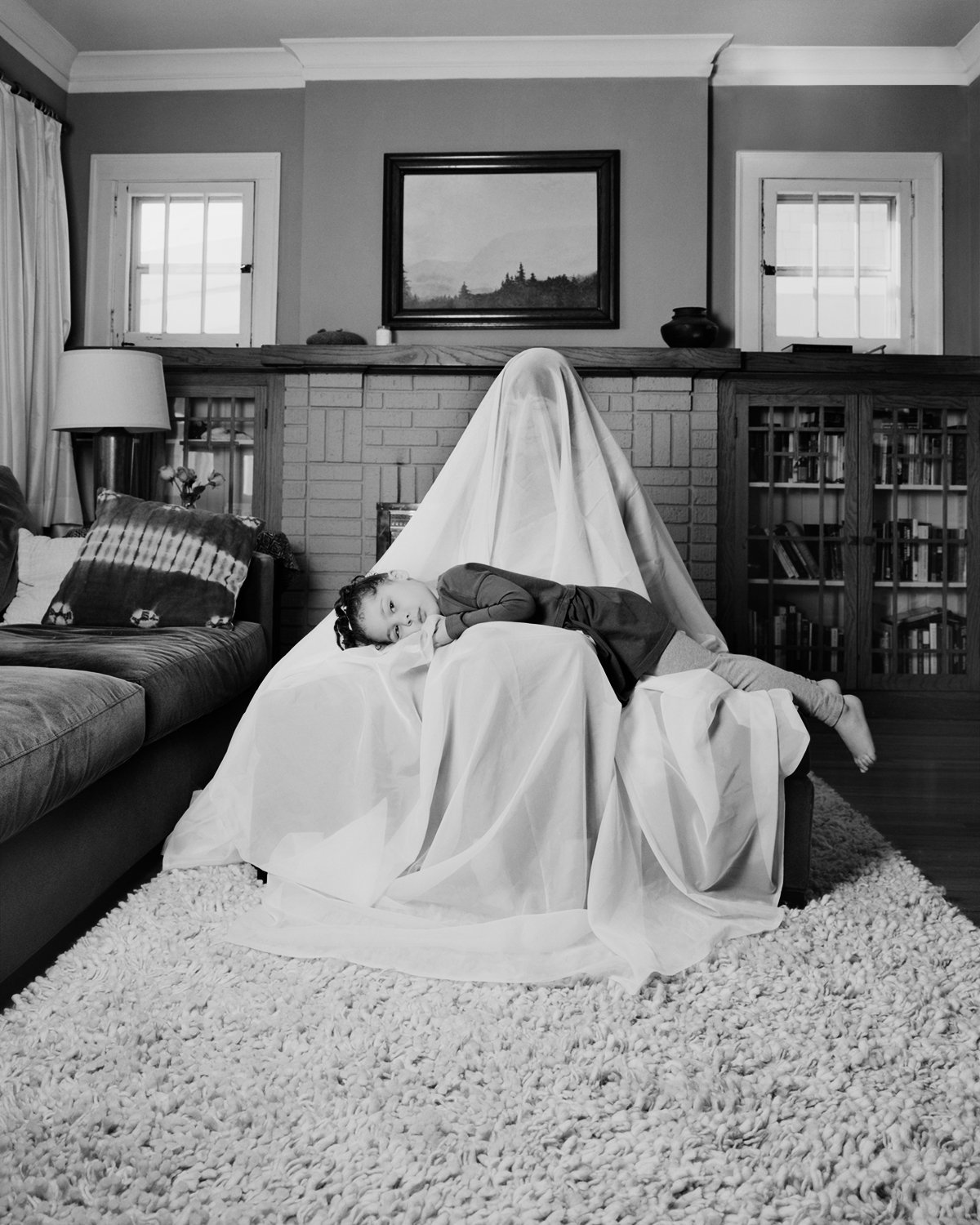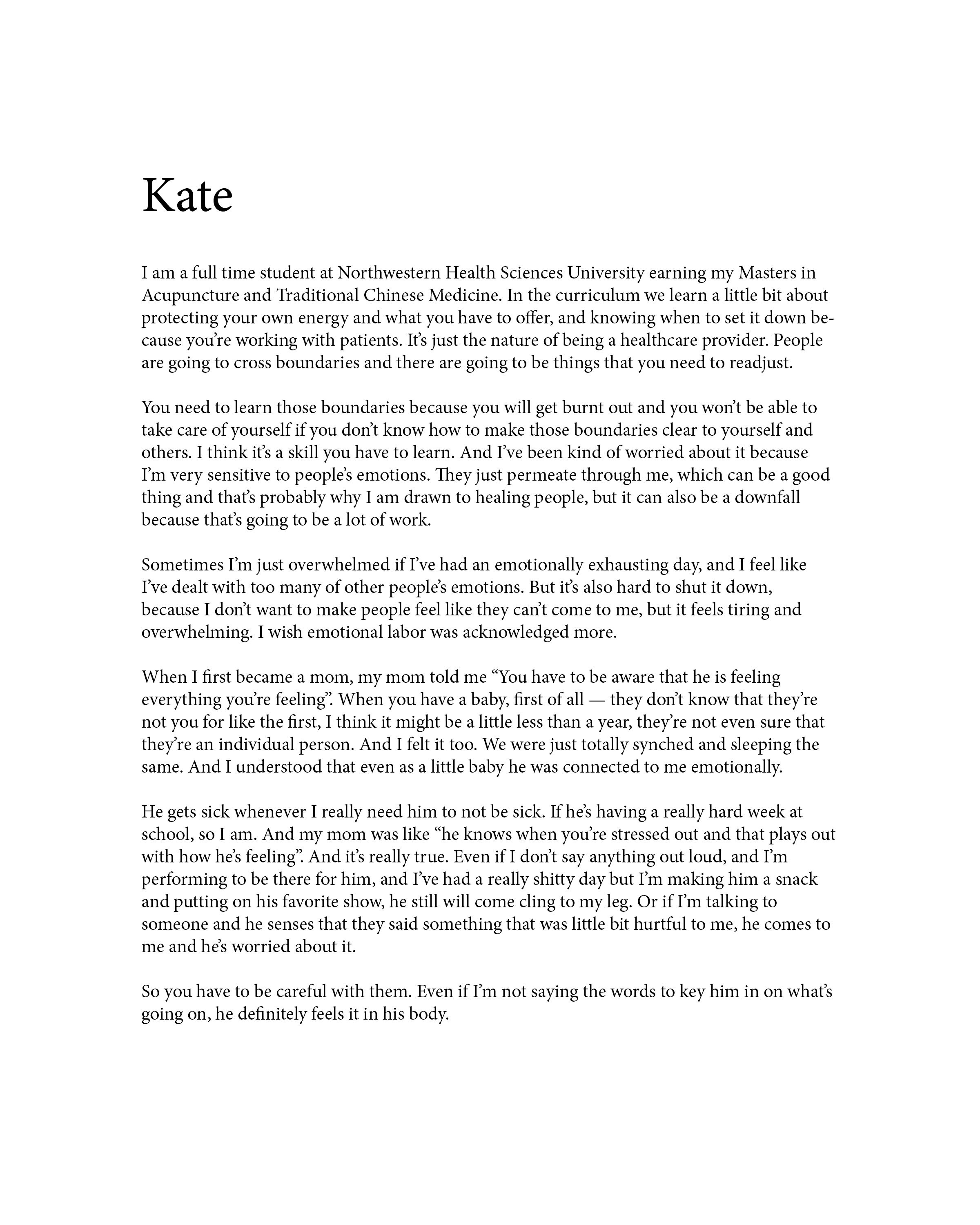The Hidden Mother
-
The body of work The Hidden Mother is a series of photographs that investigate the overlooked issue of mothers performing disproportionate amounts of emotional labor. The series stems from the Victorian Era photographic technique, the “hidden mother”, that was used to make portraits of children who struggled to hold still during long exposure times. The mothers were cloaked in a dark fabric, meant to imitate a backdrop, and then the children were placed on the mother’s lap so that the child would appear to be posing on their own. The subsequent photographs produced eerie and unsettling images that call into question the role of mothers, and their neglected presence. The visual relationship established in the Victorian Era “hidden mother” technique between the child, mother, and fabric, lays the foundation for Rickner’s contemporary interpretation.
In this series, intimate familial portraits are captured within the home and establish the visual connection between emotional labor and domesticity. The draped fabric obscures the mothers’ identity and nods to the unseen emotional weight they carry, while the translucent quality subverts the intentions of the Victorian Era photographs by allowing a glimpse of the mothers: an acknowledgement of their presence and work. The draped textile and physical orientation of the mother activates a tension that disrupts the visual relationship between mother and child in an attempt to iterate the disconnection that grows over time from overperforming unnoticed emotional work. At the same time, the physical connection and gestures between the mother and children nod toward an effort to pursue emotional connection despite this barrier. Although the fabric is always present, the degree to which the mother is covered varies in order to illustrate the desire to break free from this oppressive force, reclaim identity, and sense of self.
The artistic process and material selection in this body of work also echo the Victorian Era. The portraits are made with a large format film camera, the same kind of equipment that was used to create tintype images from the 1800’s, and the black and white film offers a similar aesthetic to the original tintype. The work exists as a selection of large scale 24x30” black and white prints that draw the viewers in to examine glimpses of the mothers and children. The quiet aesthetic of the monotone portraits distills the noise of the domestic spaces and centers the focus on the cloaked mothers. This further encourages the viewers to contemplate the mothers’ muddied identities and complicated discourse surrounding their overlooked, yet essential, work in the home.
























